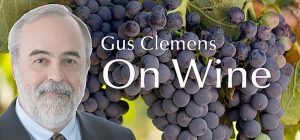Ingredients and allergy information likely are coming to a wine label near you. Much already is mandated in Europe. The U.S. Treasury Department’s Tax and Trade Bureau (TTB) is taking comments to fine-tune U.S. mandates.
The process takes time. When decisions are made winemakers have two-plus years to get approvals and print labels. So 2026 is the earliest you will see mandated ingredient labels on U.S. wines.
Wine ingredients are not a simple issue. It is likely only ingredients in the finished product will be listed, not those that disappear during the winemaking process. Makes sense, but not certain. Will percentages of individual grape varieties be required? Will “grape juice concentrate” cover ingredients like Mega Purple? For most wine, water—85% or more—will be listed. All to be determined.
Labeling advocates struggle with vagaries of wine. Exact descriptions vary with vintage. Even from a specific vintage, wine is a living product that changes over time. It is hard to determine things like alcohol by volume (ABV) in advance for labels to be printed. One attorney involved in the process quipped: “Wine is not Cheetos.” Expect a wave of lawsuits when rules are asserted.
There is momentum to allow winemakers to use QR codes to publish ingredients. QR codes would be more timely and accurate. It also would free winemakers from having to change their labels each year, an important consideration for smaller winemakers.
The QR code solution also is attractive because wine is an international trade product. It would allow winemakers to satisfy the rules of different countries–or, horror of horrors—individual U.S. states. It is easier and faster to tweak a website than to print a gallimaufry of labels that depend on where the wine was made, sold, or shipped to.
Wine ingredient labels are coming. This will be a good thing. But the devil will be in the details.
Tasting notes
• Attems Pinot Grigio Ramato, Friuli DOC 2021 is interesting play as a rosé of pinot grigio. Lively and full of flavors. $15-20 Link to my review
• San Felice Il Grigio da San Felice Chianti Classico Reserva DOCG 2019 is well-done mass distribution Chianti. $15-25 Link to my review
• Lapostolle Cuvée Alexandre Cabernet Sauvignon 2020 is fulsome with brooding, dark fruits and ripe flavors. $22-25 Link to my review
• Chehalem Pinot Noir Chehalem Mountains, Willamette Valley 2021 is smooth, elegant, somewhat bashful red fruits, easy-going tannin and proper acidity. $25-32 Link to my review
Last round: What is the leading cause of dry skin? Towels. Wine time.


